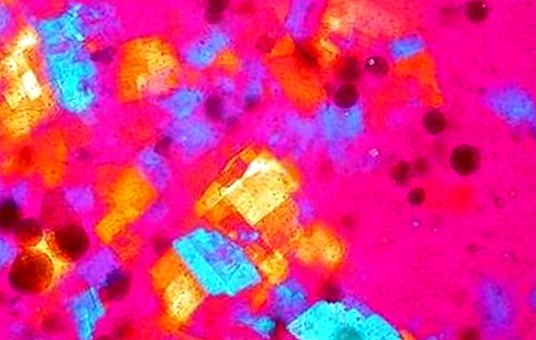Why snot appear when we have a cold or swallowed
Every autumn and every winter the same thing happens, year after year: with the arrival of the cold, the change of season and also the change of time our defenses tend to weaken, which together with the temperature changes as a consequence of the use of the heaters and radiators have a more or less decisive influence on the appearance of colds and colds.
Therefore it is always essential to maintain adequate guidelines when it comes to preventing both colds and flu, and basically we could summarize in the following: avoid sudden changes in temperature, warm up whenever we go out of the house (putting special emphasis in the area of the throat, for example with scarves or long scarves), wash our hands well and maintain good hygiene in this regard, always coughing or sneezing in the elbow area and never in the hands ...

But when the cold, the cold or the flu knocks on our door and visits us, one of the most common symptoms is the appearance of mucus, those annoying companions that tend to appear a few days after we see the discomfort in the throat.
What are the mucus?
Snot are viscous substances that our body produces as a method of protecting certain surfaces of our body. In the case of mucus that arise in the presence of a flu or a cold, they arise as a consequence of a bacteriological attack, so we are facing a respiratory mucus.
In this sense, the mucus It is produced by a type of cell known as goblet, in the Golgi apparatus and the endoplasmic reticulum.
The mucus is secreted by mucous membranes, and is composed of high concentrations of antibodies and a mixture of glycoproteins and proteoglycans, with protective functions in the body.
Although we also find other types of mucus in other parts of the body, such as in the cervix (if you are female), in the stomach, in the lungs and in the colon.
Why are mucus formed?
Unlike what you might think, and although it is true that they tend to be quite annoying, the truth is that mucus is a completely natural substance, of biological origin, that we always find in mucous membranes. In fact, we always find them in the nose, being able to change color, consistency, texture and smell depending on the cause that causes their excessive appearance. In this sense, we can identify several of these causes:
- Virus: are the mucus that appear due to a common cold or flu. These viruses tend to attack the nasal membranes, weakening them. Our organism, as a way to get rid of all these viruses and bacteria, generates an excess of mucus to expel them.
- Cold: if at some point you have gone through a more or less horrible cold it is likely that you have also noticed the appearance of snot. Why? Fundamentally because our body requires that the oxygen that enters the lungs is always at not very low temperature, if not the body sends a greater number of blood emissions in order to heat the area of the nose. This has a clear effect: there is a heating of the air, but as a result we produce a lot of mucous in the nose.
- Allergies: as a result of allergic reactions, which cause effects that in essence remind very much of the mucus produced by the flu or the cold. Unlike viruses and bacteria, sneezing and mucus produced by allergic reactions are not contagious.
- Cry: the crying also produces mucus, since the nasal membrane is stimulated and as a consequence it releases mucus in a much faster way.
In summary, Snot is a means of natural protection of our body. Therefore, they are not negative or bad, although that does not mean they can become an annoying companion.
Image | mcfarlandmo This article is published for informational purposes only. It can not and should not replace the consultation with a Physician. We advise you to consult your Trusted Doctor. ThemesInfluenza Respiratory infections



